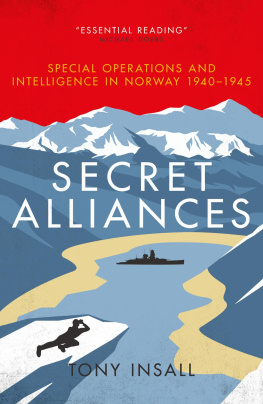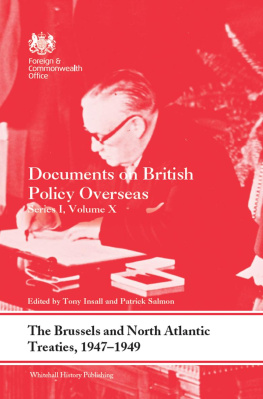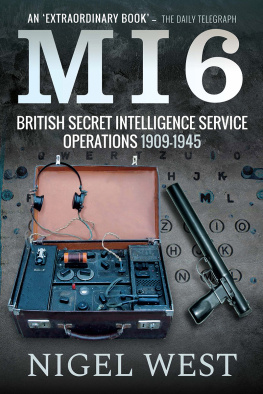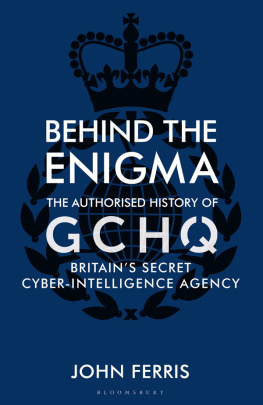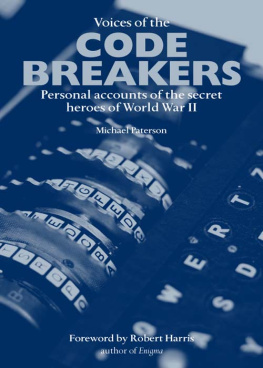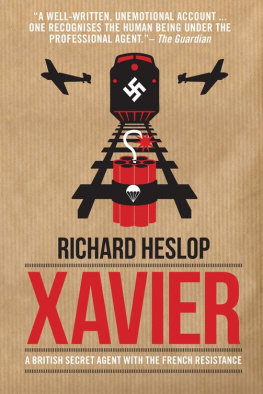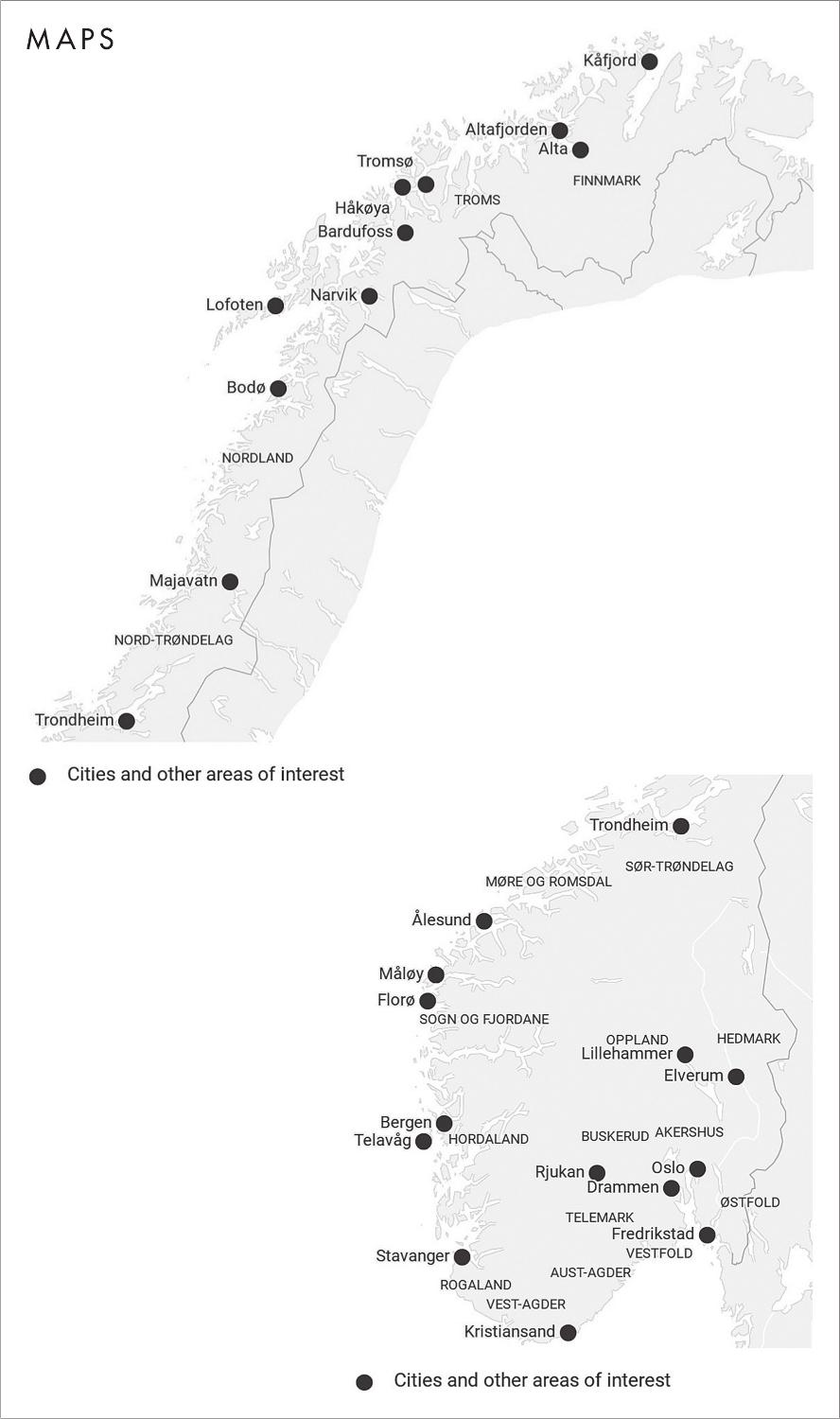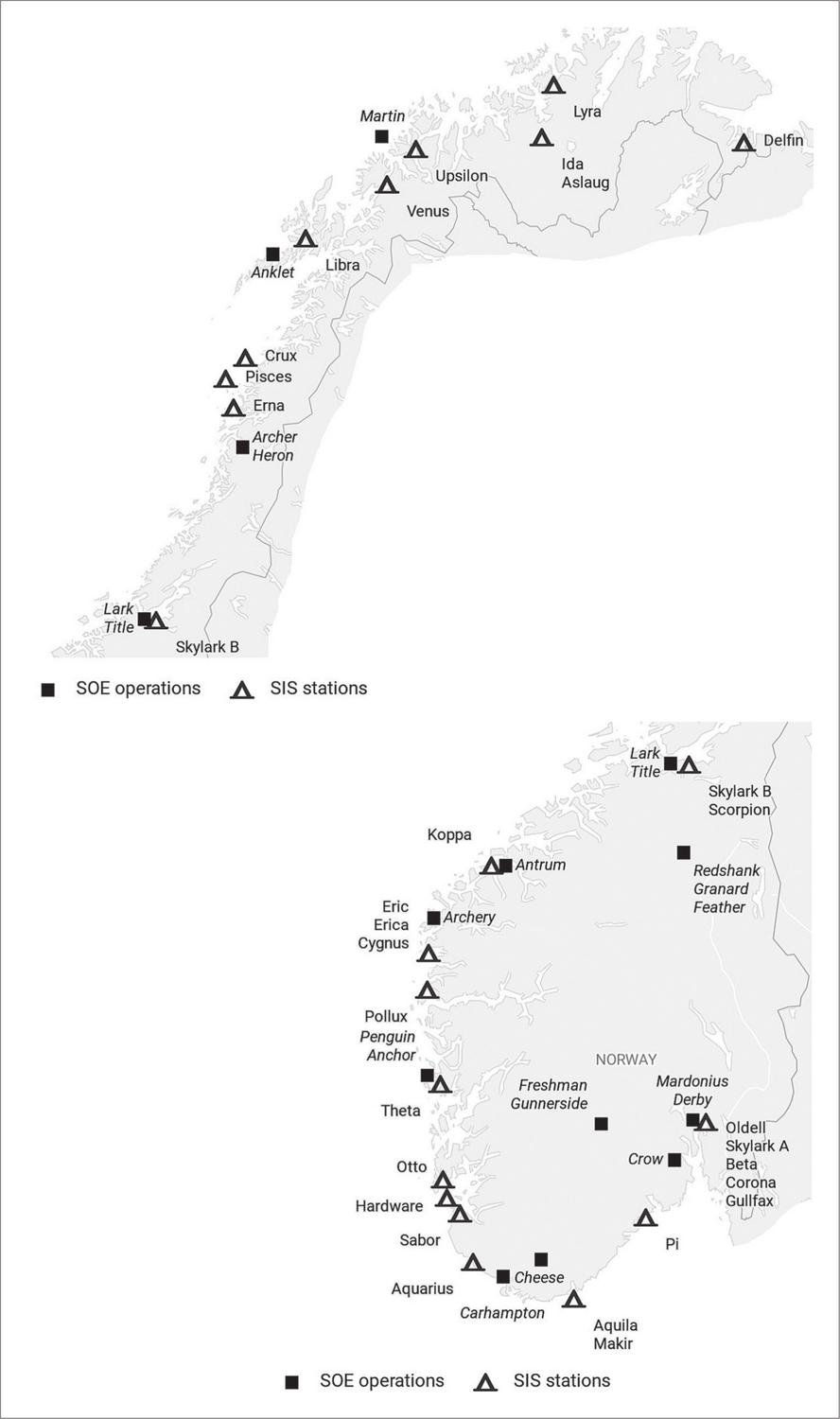A fascinating and novel insight into British intelligence and special operations in wartime Norway. Among a number of important new sources, Tony Insall has discovered in Oslo top-secret SIS files which are unavailable in Britain.
P ROFESSOR C HRISTOPHER A NDREW, FOUNDER OF C AMBRIDGE U NIVERSITY I NTELLIGENCE S EMINAR AND AUTHOR OF T HE S ECRET W ORLD: A H ISTORY OF I NTELLIGENCE
Secret Alliances shines a light on a fascinating but little-known part of the war. Filled with new details and insight, it brings to life the drama of special operations and intelligence work in Norway, including the extent of SIS coast-watching, which provided significant coverage of the German fleet, especially the Tirpitz.
G ORDON C ORERA, BROADCASTER AND AUTHOR OF MI6: L IFE AND D EATH IN THE B RITISH S ECRET S ERVICE
This is a beautifully detailed account that brings to life the extraordinary story of the Norwegian resistance. So many played their part kings, prime ministers, traitors like Kim Philby but mostly this is a tale of bloody-minded determination on the part of unsung heroes. It is essential reading for anyone who wants to understand this vital period of Norwegian history.
M ICHAEL D OBBS
Secret Alliances is a gripping history of wide-ranging Anglo-Norwegian wartime cooperation, spiced with vivid stories of heroism and betrayal. Tony Insall makes unprecedented use of British and Norwegian archives to present a detailed picture of resistance operations in Norway, and also explains the political context that facilitated what was perhaps the most effective resistance movement in occupied Europe.
P ROFESSOR P ATRICK S ALMON, C HIEF H ISTORIAN, F OREIGN AND C OMMONWEALTH O FFICE
The most detailed and comprehensive study of wartime clandestine operations conducted in Norway yet published. Highly readable and thoroughly researched.
N IGEL W EST, INTELLIGENCE HISTORIAN
A gripping account of Anglo-Norwegian cooperation in the heroic struggle against German occupation.
A NDY M C N AB
Some of the most important links between Britain and Norway during WWII were welded through the vast and varied numbers of clandestine operations undertaken by SOE and SIS. Here, Tony Insall describes these activities against the complex political backdrop whilst drawing upon a thorough understanding of Norway to add considerably to our knowledge on the subject.
I VAR K RAGLUND, N ORWAYS R ESISTANCE M USEUM
CONTENTS
- Chapter 2 THE RESISTANCE BEGINS
9 April 1940: German invasion - Chapter 3 DANGEROUS RIVALS
SIS and SOE: did their differences damage operations in Norway? - Chapter 4 CRACKING ABWEHR CODES
How Bletchley Park made the breakthrough - Chapter 5 GERMAN SUCCESS, NEAR MISSES AND FAILURES
Abwehr espionage: agents, double agents and Double-Cross - Chapter 6 SECRET ALLIANCES TAKE EFFECT
19411942: creating a productive relationship - Chapter 7 SOES SUCCESSES AND SETBACKS
Operations and problems 19411943 - Chapter 8 THE SIS COAST-WATCHERS
Development of naval coverage - Chapter 9 OPERATIONS FRESHMAN AND GUNNERSIDE
Attempts to destroy the heavy water plant at Vemork - Chapter 10 THE TIDE STARTS TO TURN
19431944: preparations for liberation - Chapter 11 HUNTING DOWN THE TIRPITZ
Churchills obsession - Chapter 12 SOE SABOTAGE AND DISRUPTING THE U-BOATS
1944: diversification of operations - Chapter 13 LUKKET P GRUNN AV GLEDE
Closed because of joy the final steps to freedom - Chapter 14 RETRIBUTION, RECOGNITION AND COMPENSATION
The aftermath
| ANCC | Anglo-Norwegian Collaboration Committee |
| BBC | British Broadcasting Corporation |
| BSS | Bayswater Security Section of SOE |
| C or CSS | Chief of the Secret Intelligence Service SIS |
| CCO | Chief of Combined Operations |
| CCS | Combined Chiefs of Staff |
| CO | Combined Operations |
| COHQ | Combined Operations Headquarters |
| COS | Chiefs of Staff |
| COSSAC | Chief of Staff Supreme Allied Commander |
| D | Sabotage Section of SIS |
| DCO | Directorate of Combined Operations |
| DDNI | Deputy Director of Naval Intelligence |
| DMI | Director of Military Intelligence |
| DNA | Det Norske Arbeiderpartiet (the Norwegian Labour Party) |
| DNI | Director of Naval Intelligence |
| DSIR | Department for Scientific and Industrial Research |
| FO | Forsvarets Overkommando (Norwegian Defence High Command) |
| FO.II | Norwegian Intelligence Office |
| FO.IV | The office responsible for resistance and military operations in Norway |
| GC&CS | Government Code and Cypher School |
| GRU | Main Intelligence Directorate (Russian Military Intelligence Service) |
| ISK | Illicit Signals Knox |
| ISOS | Illicit Signals Oliver Strachey |
| JIC | Joint Intelligence Committee |
| LO | Landsorganisasjonen i Norge (the Norwegian equivalent of the TUC) |
| MEW | Ministry of Economic Warfare |
| MI1c | An early name for the Secret Intelligence Service |
| MI5 | Security Service |
| MI6 | Another name for the Secret Intelligence Service |
| MI.II | Norwegian intelligence office in Stockholm |
| MILORG | Norwegian military resistance organisation |
| MI(R) | Military Intelligence Section for Irregular Warfare |
| NID | Naval Intelligence Division |
| NKVD | Peoples Commissariat for Internal Affairs (Russias intelligence service) |
| NOK | Norwegian kroner |
| NS | Nasjonal Samling |
| OIC | Operational Intelligence Centre |
| POW | Prisoner of War |
| RVPS | Royal Victoria Patriotic School |
| SD | Sicherheitsdienst (the Nazi Partys intelligence service) |
| SF HQ | Special Forces headquarters |
| SHAEF | Supreme Headquarters Allied Expeditionary Force |
| SIS | Secret Intelligence Service |
| SEK | Swedish kroner |
| SOE | Special Operations Executive |
| STAPO | Norwegian NS secret police |
| USAAF | American Air Force |
| W/T | Wireless transmitter |
| XU | Norwegian resistance intelligence organisation |
For five years we have worked together, in conditions which have sometimes been difficult. But I should like to say that we have had no allies, however powerful, with whom it has been a greater privilege to work than our friends from Norway. They have responded to every call often heavy calls which we have had to make upon them.
S ir Anthony Eden, the Foreign Secretary, paid this compliment to his guests at a farewell lunch which he hosted for members of the Norwegian government on 23 May 1945, as they prepared to return to Oslo and to a country liberated after five years of German occupation. The euphoric occasion marked a stark contrast with the circumstances of their arrival in June 1940. How was this change achieved?

